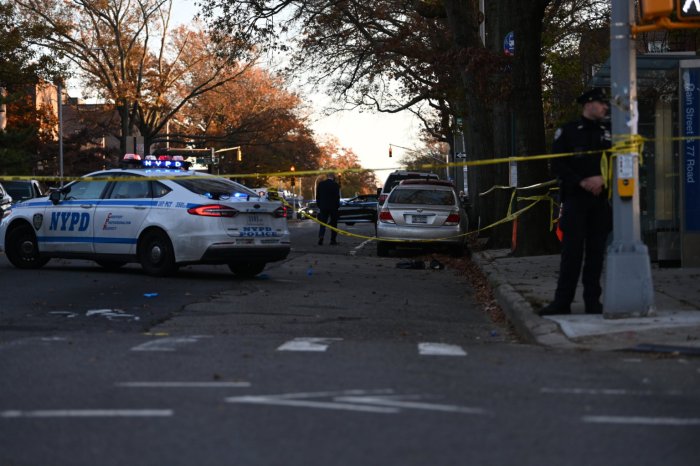Ramone had been diagnosed with lymphatic…
By Jennifer Warren
Joey Ramone, a Forest Hills native considered by many to be the patriarch of punk rock with his frenzied, anti-establishment music, died Sunday at New York Weill Cornell Medical Center in Manhattan. He was 49.
Ramone had been diagnosed with lymphatic cancer in 1995, but few in the music industry discussed his illness publicly, said Chuck Eddy, music editor of the Village Voice.
Ramone, whose real name was Jeffrey Hyman, attended Forest Hills High School in the late 1960s, school officials said.
Those who knew him described Ramone as a man who in contrast to his black leather, iconoclastic appearance was very kind to his fans and supportive of his band members.
“There was something almost angelic about him. He was an incredibly sweet guy,” said Eddy, who toured with the Ramones in 1990 during the release of their album, “Mondo Bizarro,” and recalled Ramone listening to oldies music on his van radio.
Ramone’s four-man rock group was formed in 1974 with Johnny, Dee Dee and Tommy, all of whom came from Queens and took on the last name of Ramone for the stage. The men, with Joey at the helm, inspired a generation of subcultures – including punk, indie and grunge rock as well as the underground college radio scene.
“Basically within the course of the last 25 years, they turned the industry over,” said Eddy. “Without them, there would be no U2, no Nirvana. Anything even remotely considered alternative rock since 1976 can be directly traced back. They were the beginning of the family tree.”
Despite commercial failures, the group took on a cult status, with more than 2,000 shows and a collection of 21 albums, including “Ramones” (1976), “Rocket to Russia” (1977), and “Pleasant Dreams” (1981). Their final album, released in 1995, was “Adios Amigos.”
The group cut their teeth in Manhattan’s East Village at the club CBGB’s in the mid-1970s, where they played with other nascent rock performers such as Patti Smith, Debbie Harry and David Byrne.
“CBGB’s gave us a home to investigate and grow within,” said Lenny Kaye, an early rocker who played with Patti Smith and was a friend of Ramone for 30 years. “All of the bands were really playing for all the other bands. It was a very insular and somewhat incestuous scene where everybody took note of what everybody what doing.”
For Ramone growing up in Forest Hills or anywhere in Queens most likely instilled in him an outsider’s perspective of the New York cultural scene, Kaye said.
“On the one hand, you’re removed from the stew pot of the downtown Manhattan art scene but close enough to it to be influenced and affected and supercharged by it,” Kaye said.
The Ramones music often has been considered the score of suburban angst. Their lyrics revealed childhoods filled with bad television, Mad Magazine, horror movies, sniffing glue and getting stoned in the basement.
“It was a suburban white trash thing,” said Eddy. But it was also quintessential New York City. The Ramones “Hey Ho Let’s Go” chant from the song “Blitzkrieg Bop” was a staple for sports fans at Shae Stadium and “a true example of the Ramones power to attract and mesmerize people,” he said.
When the Ramones formed in 1974, the fast-paced, bubble gum melodies of the 1950s and early ’60s had dissolved into a “big bloated corporate thing,” said Eddy. Rock bands recorded with classical orchestras. The melodies had slowed and the lyrics diluted into vapid poetry, many rock historians believed. But the Ramones infused speed, vernacular and the beat back into rock.
“They brought rock back from the grave,” Eddy said. “It’s really ironic in a way that he died on Easter, but that’s really what he did. They took it back to the base and found a way to make it start all over again.”
Reach reporter Jennifer Warren by e-mail at Timesledgr@aol.com or call 229-0300, Ext. 155.




























